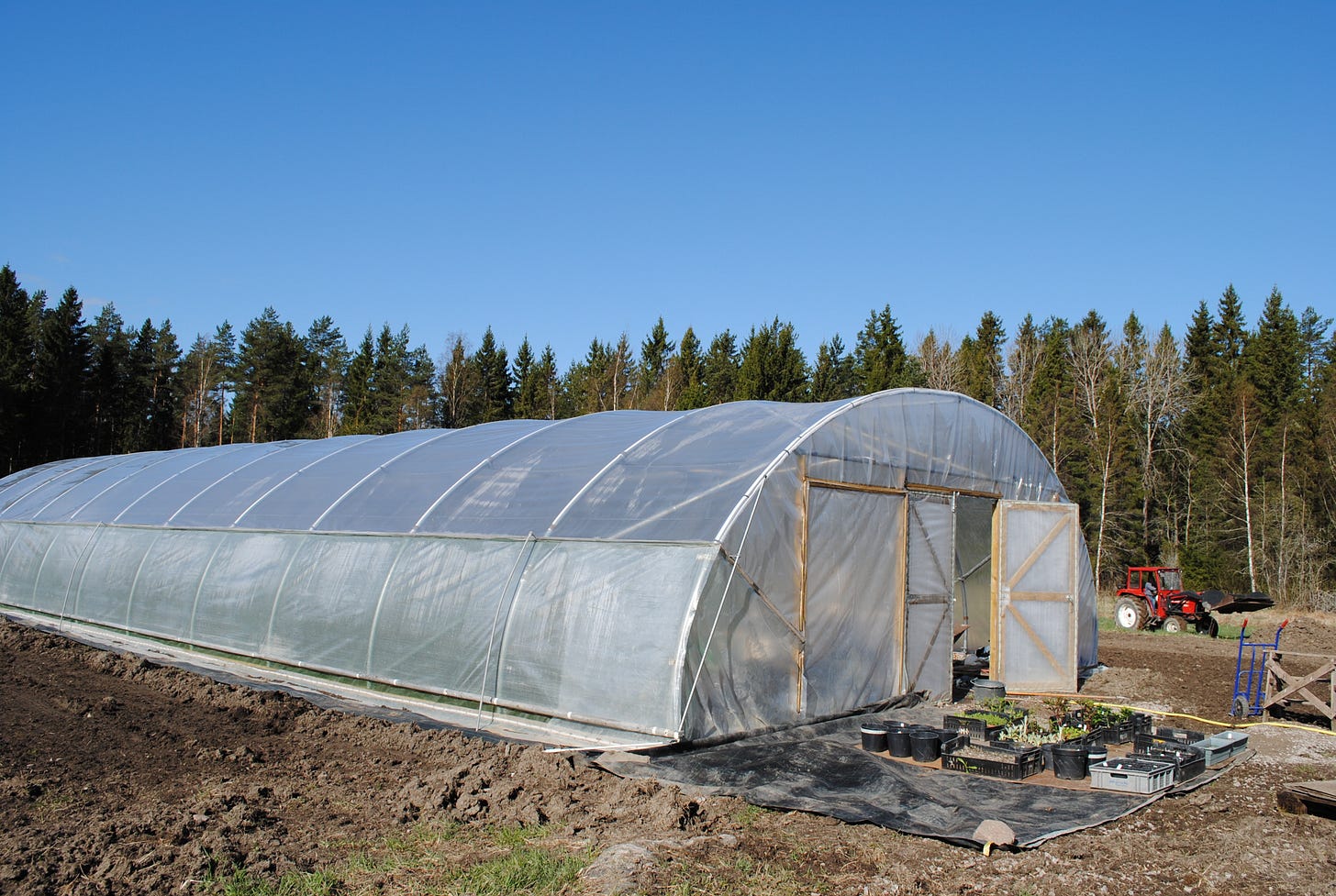It seems as if we will get an early spring this year. All snow is gone, the first crane showed up a week ago and today the lake is full of geese, swans, ducks and waders.
We got our first calf two weeks ago, her name is Spirulina. Unfortunately for her, none of the other four mother cows have yet delivered. Now she runs wild and keep her mother busy - and also the other cows are enlivened by her. But it is high time that the others give birth. I am sure two of them will this weekend if not before. As you can see from the video below, her sloppy mother gave birth in the snow-mud instead of in the stable, the forest, a dry patch under a tree. The mother, Spira, is a mix of SRB (an older multipurpose cow), Hereford and a few other genes. The bull used was a Swedish Mountain cattle, and Spirulina looks very much like such.
In our 200 m2 plastic tunnel, autumn sown rocket and spinach are already quite big, next week we can start to pick and today I saw the first asparagus shoots. They were violet as they are when it is still cold. In the small heated nursery within the green house there are seedlings of chili, peppers, some flowers, tomatoes, celeriac and cauliflower. This year we will have to renew the plastic cover, it is already 10 years old. In principle, I don’t like plastics and even less so because of its fossil origin. But I must admit that that thin layer makes an enormous difference in climate, and when you farm on the 60th degree North you appreciate it. Weaning us from oil will not be simple.
Talking about the climate, it is certainly an early spring and it undoubtedly so that winters are getting milder and shorter here. Spring and autumn are longer than before. Can’t say I see a lot of difference in the summer though. My personal Swedish heat record is still from 1983, I remember it well because we were laying a roof with tar paper and it was unbearably hot. One could say that we speculate in a warmer weather as we plant walnuts, wine grapes and other plants that normally can’t grow here.
I read yet another article claiming that feedlot beef cause less green house gas emissions than grassfed beef. But when I start reading it, I see it has very little value.
First, it is nothing new at all. As long as you recalculate methane into carbon dioxide equivalents, emissions will always be higher from animals that grow slower. But it is flawed metric. When you look at the real climate impact you get another picture. Interestingly enough the main author of the study was a co-author of another paper from 2015 calculating the real climate impact, which concluded that: “It is concluded that certain forms of pastured beef production have substantially lower climate impact than feedlot systems.“
Second, as so many studies before it is a pure desk work based on models and standard emissions factors. The results are basically determined by the model. But real life emissions of nitrous oxide from grazing cattle may differ very substantially from the models. The research supposedly take carbon sequestration in grasslands into consideration, but they only count the extra carbon that is a result of the grazing with the argument that the grassland would sequester carbon also without any grazing cattle (that is correct, but in the long run, most grasslands will change into something else if not grazed). Meanwhile, the researchers state that they don’t consider grazing on croplands which, according to them, could sequester a lot of carbon. The reason for not including it, is that they believe that such cropland should better be used for something else!
In the end, I get quite exhausted spending my hours reading such pointless research. Especially when it is springtime.



As what seems like always ruminant emissions are treated like fossil fuels. Emissions from burning fossil fuels has an additive effect to climate carbon. Living things are part of a cyclical system. Which in the case of ruminants has been around for c. 80 million years with out us going to hell in a hand cart.
Cheers
Brads
Gorgeous cattle, Gunnar. We're expecting our first one any minute now, as well as an early spring snowstorm.